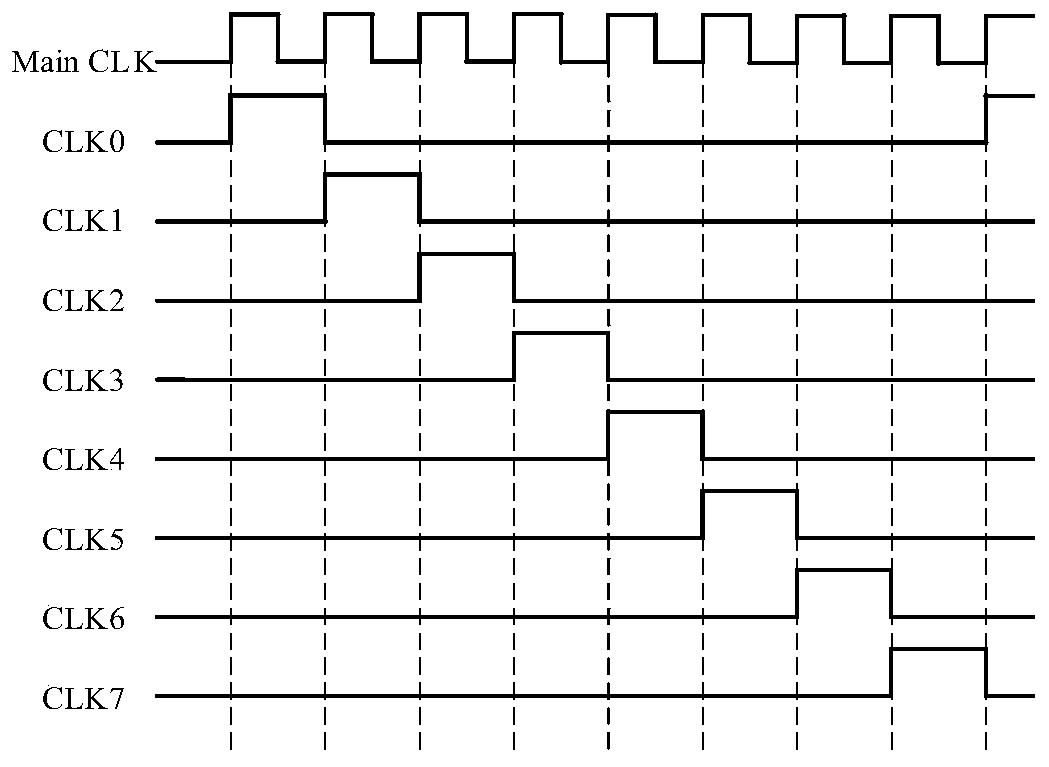Random multiphase clock generation circuit
A technology for generating circuits and multi-phase clocks, which is applied in the direction of applying random technology conversion, electrical components, physical parameter compensation/prevention, etc. It can solve the problems of sampling time mismatch, dynamic performance degradation of analog-to-digital converters, etc., and improve dynamic performance Effect
- Summary
- Abstract
- Description
- Claims
- Application Information
AI Technical Summary
Problems solved by technology
Method used
Image
Examples
Embodiment Construction
[0022] Below in conjunction with accompanying drawing, further illustrate the present invention through embodiment.
[0023] The present invention proposes a random multi-phase clock generation circuit, which can randomly output M sub-clock signals, and M is a positive integer greater than 1; therefore, the present invention can be applied to TI-ADC and used to control M channels of TI-ADC respectively However, it is obvious that the present invention can be applied not only to TI-ADC, but also to other systems that require random multi-phase clocks. In the following, the application of the present invention to control the random working sequence of M channels in TI-ADC will be described as an example.
[0024] The total number of registers in the random encoding module and the encoding queue module is equal to the number of sub-ADCs in the TI-ADC (ie, the number of channels of the TI-ADC), so the random encoding module includes a first register, and the encoding queue module ...
PUM
 Login to View More
Login to View More Abstract
Description
Claims
Application Information
 Login to View More
Login to View More - R&D
- Intellectual Property
- Life Sciences
- Materials
- Tech Scout
- Unparalleled Data Quality
- Higher Quality Content
- 60% Fewer Hallucinations
Browse by: Latest US Patents, China's latest patents, Technical Efficacy Thesaurus, Application Domain, Technology Topic, Popular Technical Reports.
© 2025 PatSnap. All rights reserved.Legal|Privacy policy|Modern Slavery Act Transparency Statement|Sitemap|About US| Contact US: help@patsnap.com



